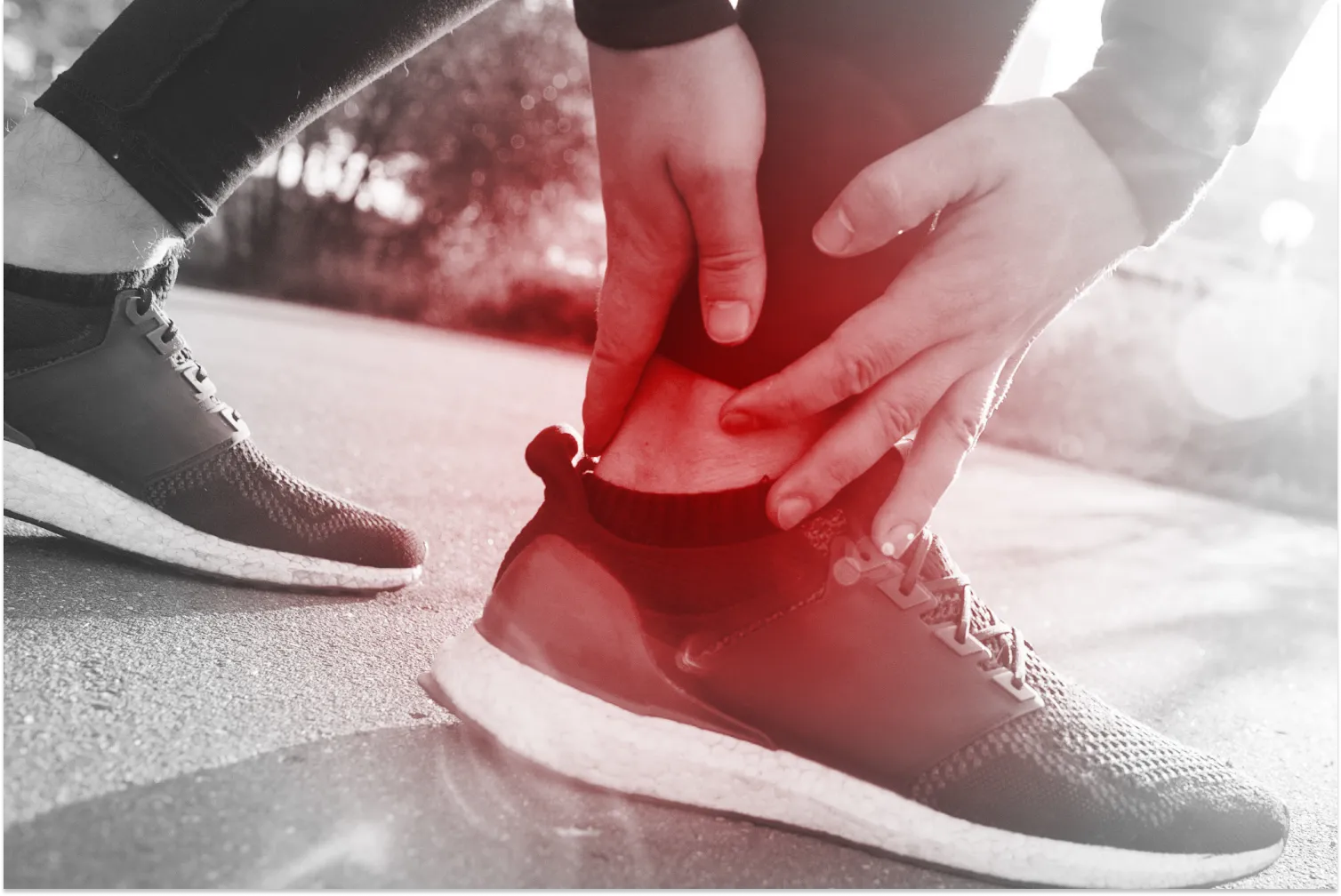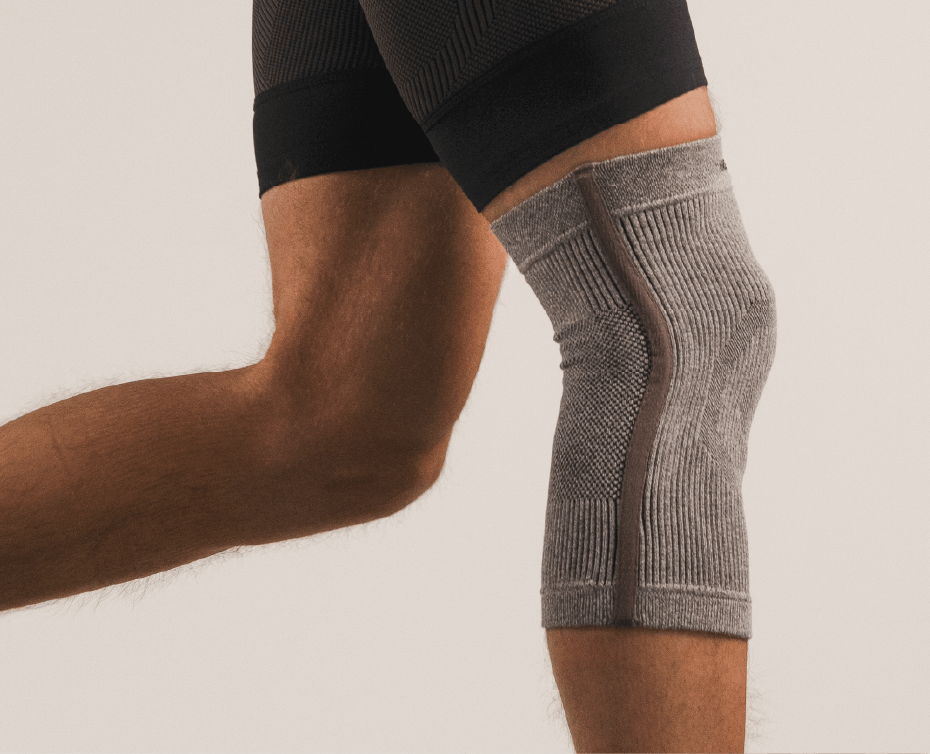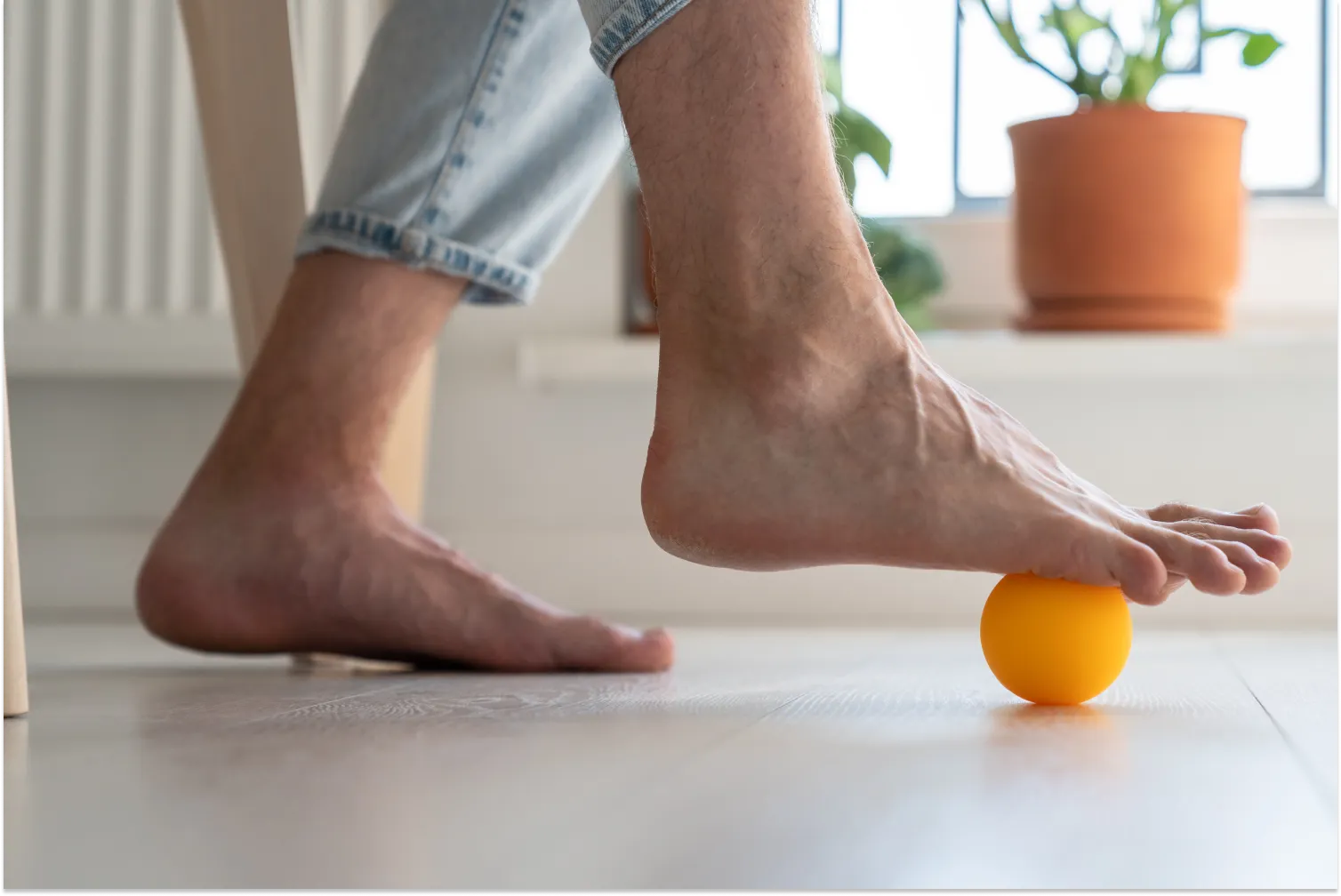Medically Reviewed By | Johannah Gregg, DNP FNP-C
If you experience poor circulation in the feet, you’re likely all too familiar with the less-than-pleasant side effects of this condition. From a strange coldness or tingling in your feet to muscle cramps and shifts in mobility, poor circulation can have real effects on your day-to-day and quality of life.
But, if you’re experiencing poor circulation, you don’t have to simply suffer through it. Certain lifestyle changes can help support healthy circulation and foot comfort. Ready to put your best foot forward and dive into the details?
What Exactly Is Poor Circulation?
At its core, poor circulation in the feet stems from disruptions in our extensive circulatory system, which efficiently delivers blood, oxygen, and essential nutrients throughout our body. In an optimally functioning circulatory system, the heart, veins, arteries, capillaries, and other blood vessels work in harmony to ensure every cell receives what it needs and waste products are effectively removed.
But, sometimes, the well-calibrated inner workings of our body experience interferences. When there are obstacles in the blood vessels — such as plaque buildup or the narrowing of blood vessels — it becomes challenging for blood to travel efficiently, especially to extremities like our toes and fingers.
The primary concern here is that the cells in these areas might not receive the necessary amount of oxygen they require. Without adequate oxygen, cells struggle to perform optimally, leading to the symptoms of poor circulation.
Understanding the nuances and impacts of this condition is paramount. Armed with knowledge and insight, you're better equipped to address its effects and prioritize your overall health and well-being.
Common Causes of Poor Circulation in the Feet
So, what leads to this slowdown in circulation? Let's break down some of the most common culprits:
- Lack of Movement: From workdays spent in front of the computer to long commutes, too much sitting can impact blood flow to your feet. But don't worry; even small changes in daily routines can help.
- Tight Footwear: Love those stylish but snug shoes? They might be cramping more than just your style. Choosing the right fit can make a big difference in your comfort.
- Smoking: It's well-known that smoking affects our health, but did you know it can also constrict blood vessels? If you’re experiencing poor circulation, seeking support to help quit smoking may help.
- Lack of Nutrients: Nutrition is the cornerstone of our body's functions, including circulation. Without the right balance of vitamins and minerals, an overabundance of sodium can cause our blood vessels to not function optimally.
- Dehydration: Maintaining proper hydration isn't just about quenching your thirst; it plays a pivotal role in your circulatory health. Inadequate water intake can lead to thicker blood, reduced nutrient transport, and subsequently slowed circulation.
- Stress: When our bodies activate the "fight or flight" response, stress hormones cause constriction of blood vessels as the body prepares to handle the threat at hand. Over time, chronic stress means your blood vessels are consistently constricted, making it harder for blood to flow freely, especially to the extremities, like the feet.
- Underlying Health Conditions: Sometimes, poor circulation might indicate broader health concerns affecting the body's systems. Pay attention to persistent or worsening signs and seek medical guidance If you suspect your circulation challenges might be part of a larger issue.
Understanding these causes is like piecing together a puzzle of how your body works. With empathy and practical insight, we can start recognizing what's behind those cold or tingling feet and take steps toward better well-being.
What Can I Do If I Have Poor Circulation?
Feeling discomfort in your feet due to poor circulation can certainly be bothersome. The good news is that understanding the cause means you can take steps to help support blood flow and alleviate related discomfort.
Here are some tips for managing poor circulation in your feet:
1. Move Your Body
Staying in the same position for too long can lead to stagnation in the blood flow, much like a car idling. You stimulate the muscles, which act as pumps by engaging in activities like walking or jogging.
This helps propel blood back to the heart while also supporting the heart in pumping out a greater volume of blood. This enhanced cardiac output encourages better circulation throughout the body.
Not able to fit a full workout into a busy work day? That’s okay! Simply breaking up lengthy spells of sitting with brief walks can make a difference.
These short bouts of movement can spark a noticeable improvement in blood flow throughout the body — from the feet to even the brain. So, no matter how you prefer to move — it's all in favor of your circulation.
2. Practice Daily Stretches
Certain stretches act like a gentle massage for your blood vessels, promoting blood flow to the feet and legs. Actions like pointing and flexing your toes or doing ankle circles are more than just soothing.
They work on the soft tissues, encouraging blood vessels to open up and enhancing blood flow to those areas.
3. Elevate the Legs
Sometimes, a little elevation is all you need. Propping up your legs gives gravity a hand in moving blood back toward the heart, aiding circulation. So kick back and relax; it's good for you!
Johannah Gregg, Doctor of Nursing Practice (DNP) and Certified Family Nurse Practitioner (FNP-C), highly recommends compression socks: “When you’re unable to elevate the legs or promote movement, compression socks can be a game changer. Nurses are recommended to wear knee high compression socks to prevent damage to their lower extremity circulatory system.”
4. Get the Right Nutrients
Essential nutrients like iron, vitamin E, and omega-3 fatty acids are critical in maintaining healthy blood consistency and vessel flexibility. An imbalanced or nutrient-deficient diet can impact blood flow, emphasizing the importance of a balanced and nutrient-rich diet for circulatory health.
Incorporate foods like leafy greens, fatty fish, nuts, seeds, and citrus fruits into your meals to support optimal circulation.
5. Stay Hydrated
Blood is mostly water, so it can become thick and move more slowly through the veins and arteries without enough hydration. Think of blood like a river, needing water to flow smoothly. Staying hydrated ensures that blood can transport oxygen and nutrients efficiently, keeping your feet and the rest of your body healthy.
6. Practice Self-Care
Finding ways to destress can profoundly influence your circulatory health. Regular exercise, for instance, can lower stress levels by releasing endorphins, which are natural mood elevators.
Beyond physical activity, practices such as meditating, reading a good book, or spending quality time in nature can offer therapeutic benefits, helping you to relax and promote healthier blood flow.
Remember, prioritizing self-care isn’t just about mental well-being; it's a holistic approach that also positively affects your physical health.
7. Add Circulation Apparel to Your Routine
When supporting healthy blood flow, circulation apparel may be just what you and your feet need.
At Incrediwear, our circulation socks utilize semiconductor technology to maintain healthy blood flow. By absorbing body heat and releasing energy back into the body, our socks can help carry blood flow and much-needed oxygen and nutrients to where you need it most. It's cutting-edge technology wrapped around your feet, designed with your well-being in mind.
When Should I See a Doctor for Poor Circulation?
While lifestyle changes can play a role in blood flow, poor circulation may also be a result of an underlying condition. If you've tried the above tips and still find discomfort lurking around, seeking medical help can provide insight into what is causing your circulation issues and how to treat them.
If you’re experiencing a lack of feeling in the feet or legs or chest pain accompanying symptoms of poor circulation, you should seek immediate medical attention. Understanding the root cause of poor circulation is key to effective care and management.
The Bottom Line
Poor circulation can impact your daily comfort and overall well-being, but with small lifestyle changes, you can reclaim control and enhance your quality of life. At Incrediwear, we're dedicated to supporting you on this journey, offering innovative solutions that complement your efforts.
Remember, you hold the power to shape your health's trajectory. Let's step forward with confidence and purpose, embracing a brighter, more comfortable tomorrow.
Sources:
Circulatory System: Anatomy and Function | Cleveland Clinic
Smoking and Cardiovascular Disease | CDC
Chronic stress puts your health at risk | Mayo Clinic
Research Shows Walking Increases Blood Flow in the Brain | New Mexico Highlands University
Omega-3 Fatty Acids and Heart Health | Circulation
Read more

Medically Reviewed By | Johannah Gregg, DNP FNP-C Ankle injuries are an unfortunate yet common part of our active lives. From simple missteps on uneven grounds to rigorous athletic activities, the ...

Medically Reviewed By | Johannah Gregg, DNP FNP-C The knees are the largest joints in our bodies and comprise many small moving parts — bone, cartilage, muscle, and tendon. They are a central part ...






Leave a comment
All comments are moderated before being published.
This site is protected by hCaptcha and the hCaptcha Privacy Policy and Terms of Service apply.